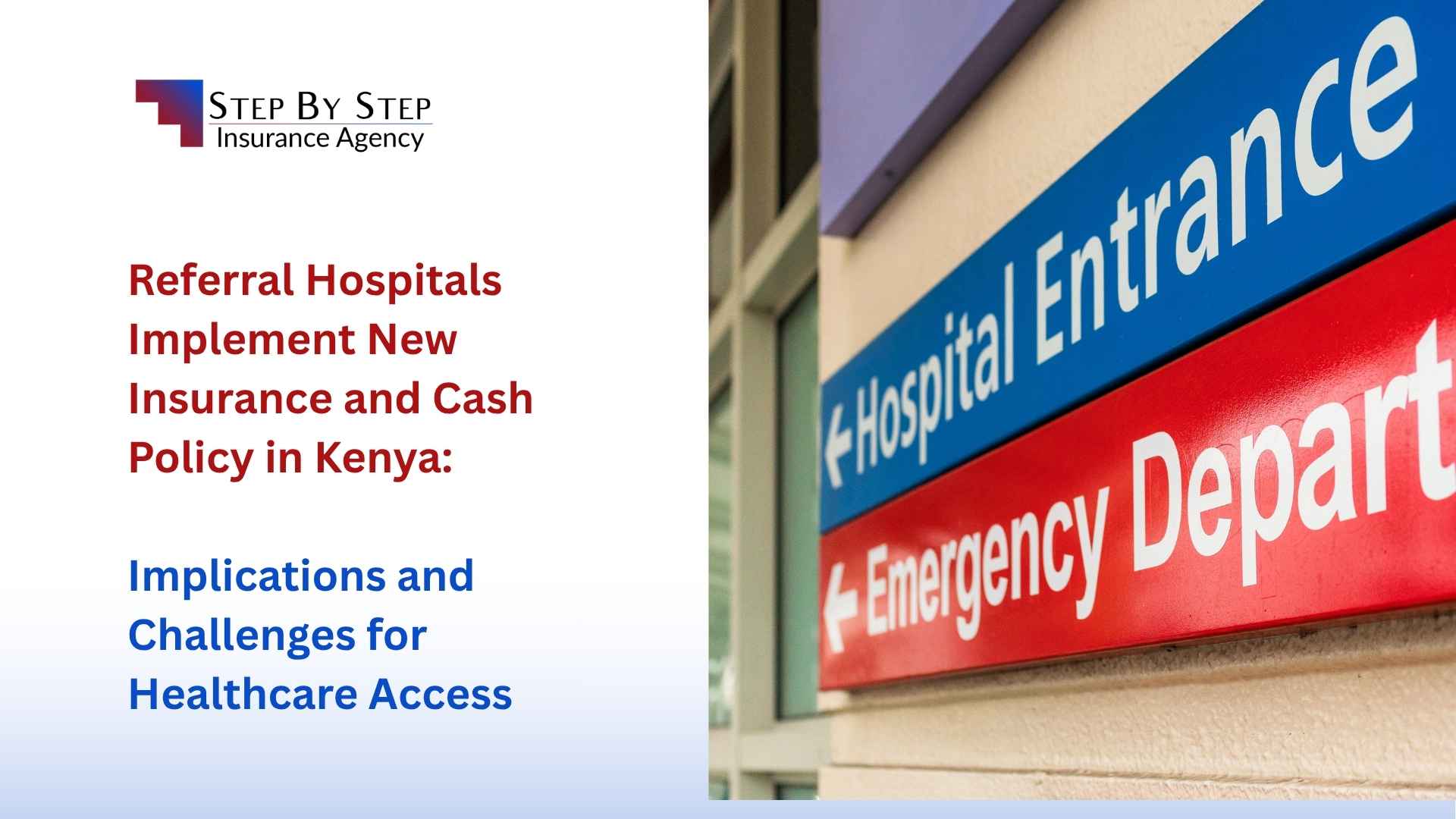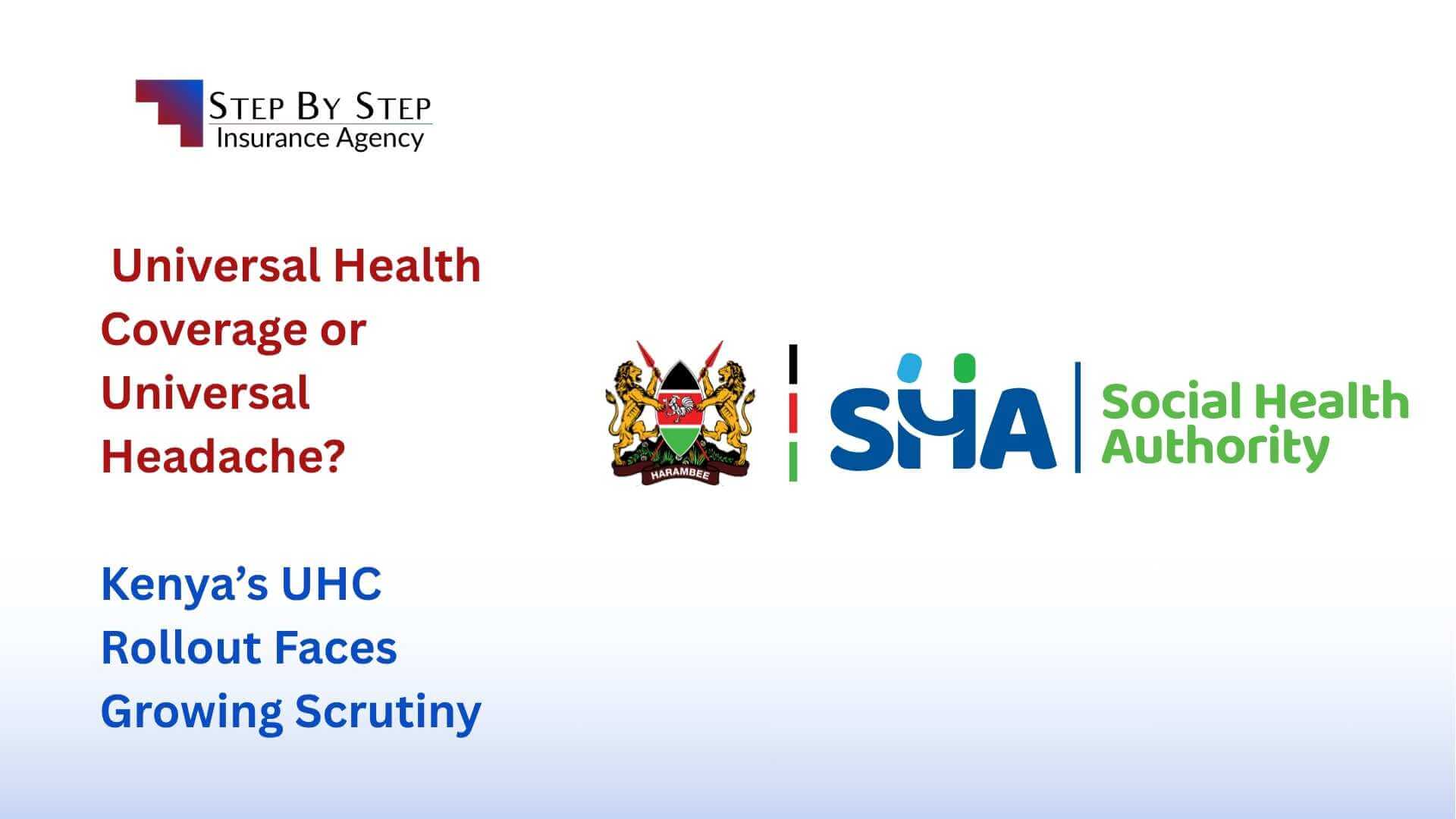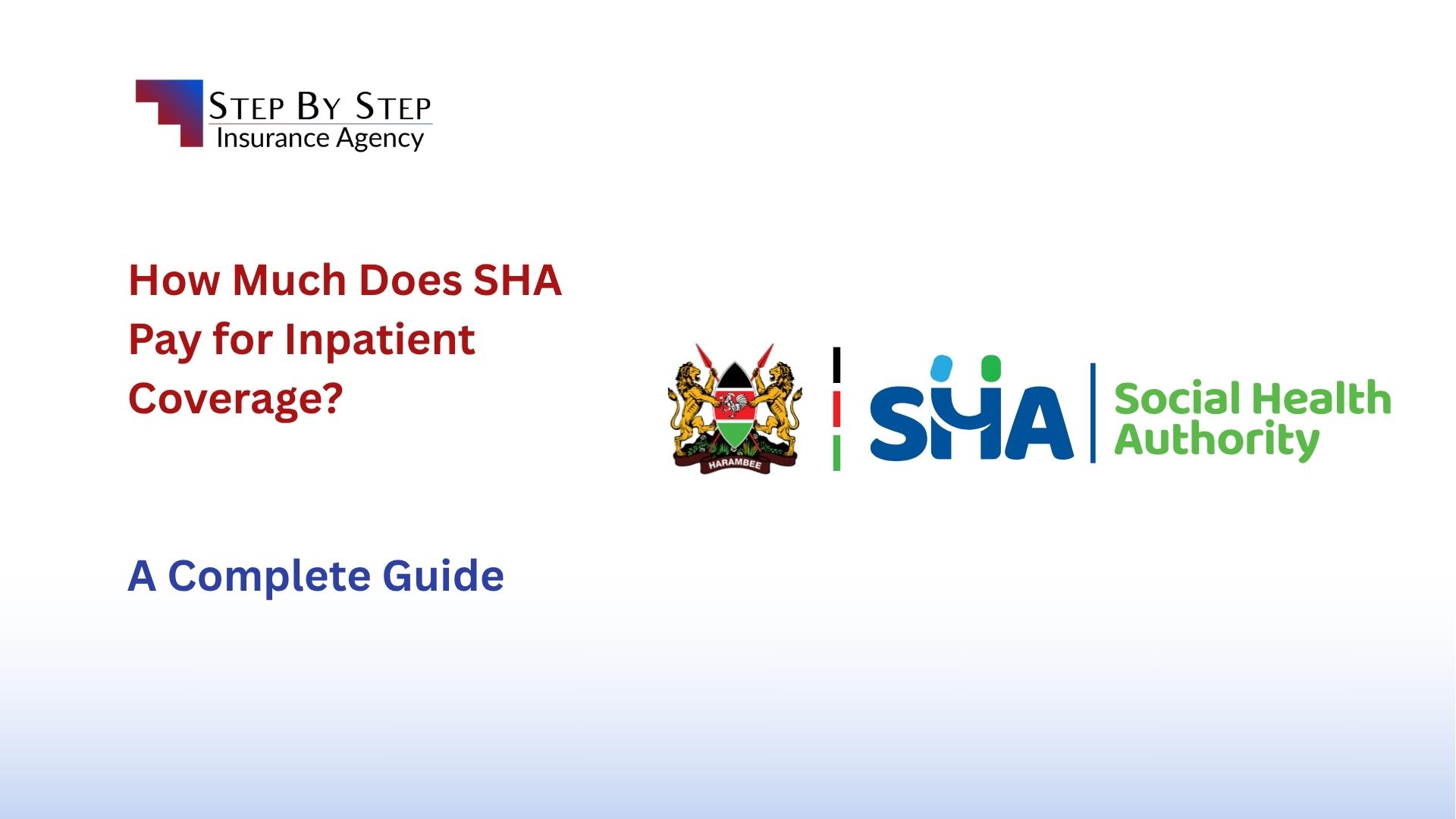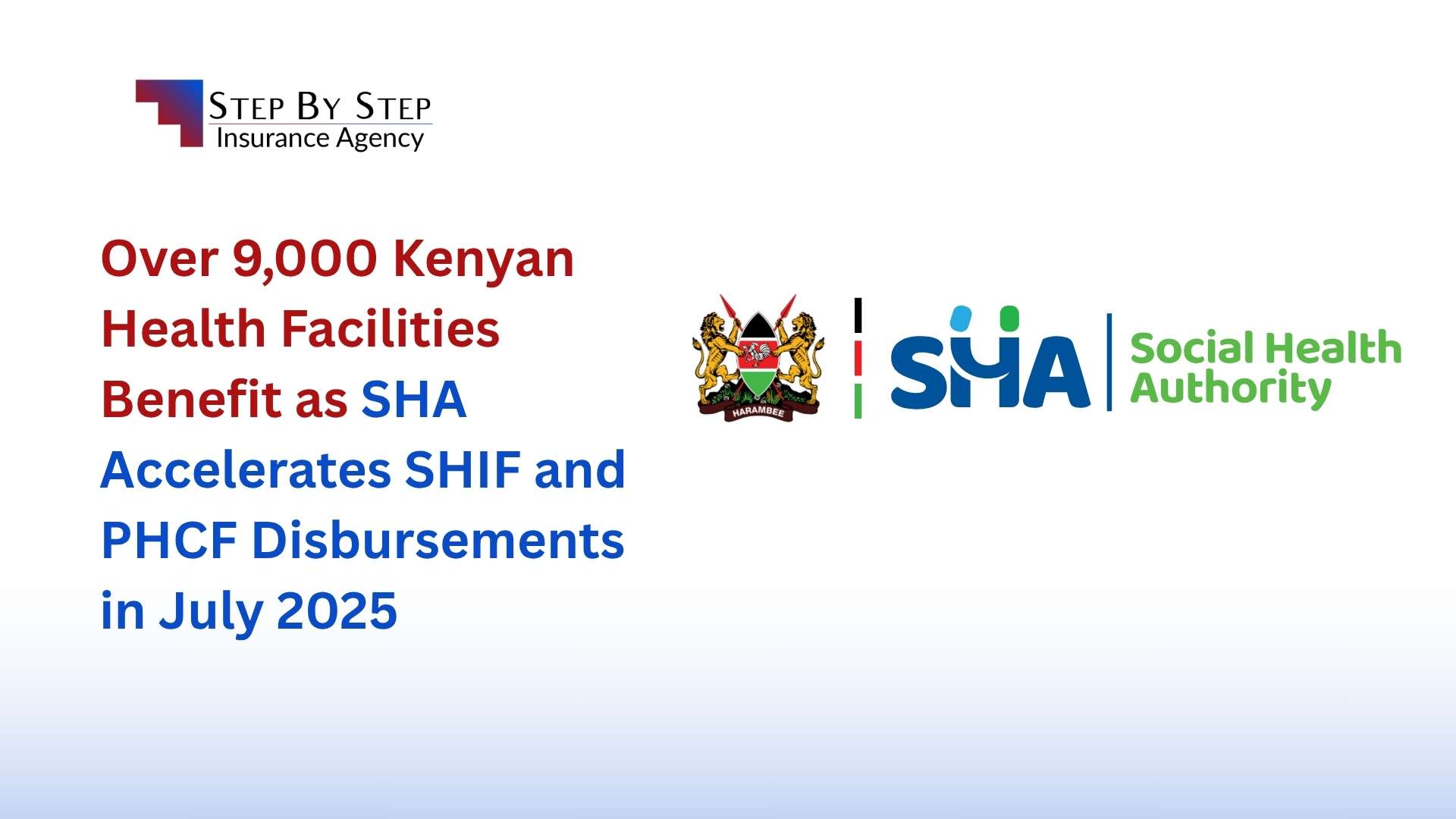Referral Hospitals Implement New Insurance and Cash Policy in Kenya: Implications and Challenges for Healthcare Access
As of July 25, 2025, referral hospitals in Kenya began enforcing a new policy that requires patients to either present valid health insurance or pay cash upfront before receiving treatment. This policy marks a significant shift in the operational protocols of both national and county referral hospitals, which serve as critical healthcare access points for millions of Kenyans. The policy aims to enhance financial sustainability and reduce the vast accumulation of unpaid medical bills in the public health system.
However, it also raises serious concerns regarding access to healthcare for millions of uninsured or underinsured Kenyans, particularly vulnerable populations who may be unable to comply with these payment requirements.
Referral hospitals are the highest tier in Kenya’s public healthcare structure, providing specialized and complex services (Level 5 and Level 6 hospitals). They handle referrals from lower-level health facilities and are essential for managing serious health conditions across the country’s 47 counties. The enforcement of the insurance or cash upfront policy directly impacts how these facilities admit and treat patients, reshaping the landscape of healthcare accessibility nationwide.
Key Takeaways
- New policy requires insurance proof or cash payment before treatment at referral hospitals
- 22 million Kenyans now covered under SHA, but many remain uninsured
- Policy aims to improve hospital finances but risks excluding vulnerable populations
- Implementation affects both national and county referral hospitals
- Emergency cases may face treatment delays or denials
- Part of broader shift toward Universal Health Coverage through SHIF
Table of Contents
- Policy Description and Implementation
- Impact on Patients and Healthcare Access
- Reactions and Concerns
- Relation to Universal Health Coverage and SHIF
- Financial and Operational Challenges
- Potential Solutions and Measures
- Conclusion: Balancing Sustainability and Access
- Summary Table: Key Policy Aspects
- Additional Resources
Join Our Insurance Community
Connect with fellow insurance professionals and stay updated on the latest healthcare policy changes, trends, and news in Kenya.
Join WhatsApp GroupPolicy Description and Implementation: What Does the New Policy Entail?
The new directive mandates that patients seeking care at Kenya’s referral hospitals must show evidence of active health insurance coverage or make an immediate cash payment before accessing medical services. This policy affects both national referral hospitals, such as Kenyatta National Hospital, and county referral hospitals across the country, which are classified as Level 5 and Level 6 health facilities providing advanced medical services.
Rationale for the Policy
Financial Sustainability: Referral hospitals have faced chronic underfunding and high rates of unpaid patient bills that threaten their operational capacity.
Reducing Accumulated Debts: The government and hospital management argue that requiring payment or insurance upfront will curb the growing backlog of unpaid medical fees.
Encouraging Health Insurance Uptake: The policy also intends to promote insurance enrollment, particularly under Kenya’s new Social Health Insurance Fund (SHIF), which aims to increase coverage nationwide.
This policy reflects a broader shift in healthcare financing in Kenya, where universal health coverage (UHC) goals hinge partly on increasing formal health insurance uptake across the population. For more details on SHIF packages, see our comprehensive guide to SHA packages.
Impact on Patients and Healthcare Access: Barriers for the Vulnerable
While the policy’s financial goals are clear, its practical implications for patients—especially the uninsured and underinsured—are stark.
Exclusion of Millions
Kenya currently has about 22 million registered members under the Social Health Authority (SHA), a dramatic increase from 8 million under the old National Hospital Insurance Fund (NHIF). However, a significant portion of the population remains uninsured or only partially insured.
Many Kenyans, especially in rural and low-income urban areas, depend on out-of-pocket payments for medical care, and the requirement to pay upfront excludes those without readily available funds.
Emergency cases, which often arrive without prior insurance or cash, face delays or outright denial of critical treatment at referral hospitals. Learn how to navigate the Afya Yangu registration process to secure coverage.
Challenges for Vulnerable Groups
Low-income families, informal sector workers, and marginalized communities are disproportionately affected.
Patients requiring urgent and long-term care face a dilemma: delay treatment while securing funds or forgo care entirely, potentially leading to worsened health outcomes.
The policy risks worsening healthcare disparities and may increase preventable morbidity and mortality if not accompanied by adequate safety nets or emergency exceptions.
Reactions and Concerns: Voices from the Public and Health Sector
The policy has been met with widespread concern and criticism:
Patient Advocacy Groups warn that enforcing payment or proof of insurance upfront may violate the right to healthcare and lead to increased suffering among the poor.
Healthcare Workers have expressed worries about ethical dilemmas when patients in need are turned away for financial reasons.
Some government officials emphasize the necessity of fiscal discipline and argue the policy will stabilize healthcare financing.
Civil society organizations urge the government to balance revenue generation with equitable access and caution against policies that create barriers to care.
An internal memo leaked to the press highlighted the operational challenges hospitals face, but also detailed the severe impact on patients turned away.
Relation to Universal Health Coverage and Social Health Insurance Fund (SHIF)
Kenya’s commitment to Universal Health Coverage (UHC) is a cornerstone of its health policy framework, with the Social Health Insurance Fund (SHIF) launched to increase inclusion and affordability of healthcare services.
The SHIF is aimed at widening insurance coverage, with over 22 million Kenyans already registered under the scheme as of mid-2025. The Fund is designed to subsidize healthcare costs at empaneled facilities, including referral hospitals, and promote prepayment over out-of-pocket expenses.
However, gaps remain, including:
Uneven enrollment across regions and socioeconomic groups.
Delays and inefficiencies in claims processing and reimbursement to facilities.
Lack of full insurance coverage for all essential services and populations.
The new upfront payment policy reflects efforts to integrate hospital operations into the SHIF framework more strictly but risks undermining the UHC philosophy if not carefully managed to avoid excluding vulnerable populations. For help with registration, see our step-by-step SHIF registration guide.
Contact SHA Directly
The Social Health Authority (SHA) in Kenya can be contacted through various channels:
Toll-free: 0800 720 601
Email: customercare@sha.go.ke or info@sha.go.ke
Headquarters: Ground Floor, SHA Building, Ragati Road, Nairobi City
For more information, visit the SHA official website.
Financial and Operational Challenges for Referral Hospitals
Kenyan referral hospitals face substantial financial pressures that underpin this policy:
Hospitals operate with tight budgets rarely matching patient service demand.
Large outstanding debts from patients unable to pay or delay payments strain operational cash flow.
Government allocations have increased (e.g., Sh138.1 billion allocated to healthcare in 2025) but remain insufficient to cover all patient care costs fully.
Referral hospitals require stable revenue streams to maintain specialist services, procure medicines, and upgrade infrastructure.
The policy attempts to reduce financial risk and improve hospital financial viability, but without complementary financing reforms and social protection, it may export the burden onto patients.
Potential Solutions and Forward-Looking Measures
To address the access barriers while maintaining hospital financial health, multiple measures are critical:
Expanding Insurance Coverage
Accelerate enrollment into the SHIF, targeting informal sector workers and low-income households.
Promote community-based health insurance schemes that integrate with SHIF.
Implement subsidies or waivers for indigent or vulnerable populations.
Improving Insurance and Claims Systems
Digitize patient registration and claims processing to ensure faster reimbursements.
Introduce direct billing arrangements where hospitals bill insurers directly, reducing upfront payment burdens on patients.
Emergency Care Guarantees
Enact policies mandating emergency treatment irrespective of payment status with subsequent billing arrangements.
Strengthen primary healthcare to reduce burden on referral hospitals.
Stakeholder Collaboration
Facilitate public-private partnerships to bridge funding gaps.
Engage civil society and patient groups in policy design to ensure inclusivity.
Policy Recommendations
Develop social safety nets to protect patients from catastrophic health expenditures.
Increase government healthcare budgets aligned with patient care realities.
Enhance transparency and accountability in hospital financial management.
Conclusion: Balancing Financial Sustainability and Equitable Access
The enforcement of the insurance or cash upfront policy at Kenyan referral hospitals reflects a critical juncture in the country’s health system. It underscores the ongoing struggle to balance financial sustainability of public healthcare facilities with the imperative of equitable and timely access to essential medical services.
While the policy seeks to reduce hospital arrears and promote insurance enrollment under Kenya’s ambitious UHC agenda, it risks excluding millions of vulnerable Kenyans from needed care if safeguards are not implemented. Moving forward requires multisectoral commitment to expanding insurance coverage, streamlining healthcare financing, safeguarding emergency access, and embedding social protections to ensure that no Kenyan is denied care due to inability to pay upfront.
This policy and its implications serve as a litmus test for Kenya’s broader health reforms, highlighting the complex intersection of healthcare financing, social justice, and public health outcomes in a rapidly evolving landscape. For answers to common questions, see our SHA Frequently Asked Questions guide.
Summary Table: Key Aspects of Kenya’s New Referral Hospital Insurance and Cash Policy
| Aspect | Details |
|---|---|
| Policy Effective Date | July 25, 2025 |
| Facilities Affected | National and County Referral Hospitals (Level 5 and 6) |
| Requirement for Service Access | Valid health insurance coverage or cash payment upfront |
| Targeted Problem | Financial sustainability, reducing unpaid patient bills |
| Concerned Populations | Uninsured, underinsured, low-income, vulnerable groups |
| Relation to SHIF | Encourages health insurance enrollment and claims compliance |
| Financial Challenges for Hospitals | Budget constraints, high patient debts |
| Potential Impacts | Access barriers, delayed or denied care, health disparities |
| Recommended Mitigations | Insurance expansion, emergency care policies, digital claims |
Additional Resources
DISCLAIMER: WE ARE NOT AFFILIATED WITH SHIF/SHA. WE ARE A PRIVATE INSURANCE COMPANY DEALING WITH VARIOUS INSURANCE PRODUCTS INCLUDING AFFORDABLE MEDICAL INSURANCE THAT CAN BE BUNDLED WITH SHA TO GIVE YOU THE BEST COVERAGE.
FOR SHA INQUIRIES, CONTACT THE SOCIAL HEALTH AUTHORITY DIRECTLY AT THEIR TOLL-FREE NUMBER 0800 720 601 OR EMAIL CUSTOMERCARE@SHA.GO.KE OR INFO@SHA.GO.KE.






